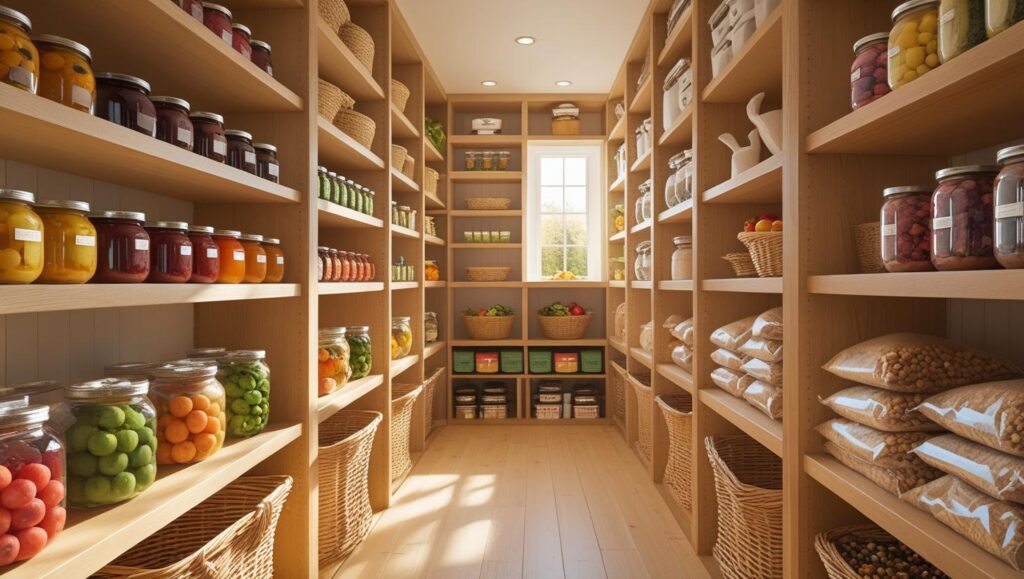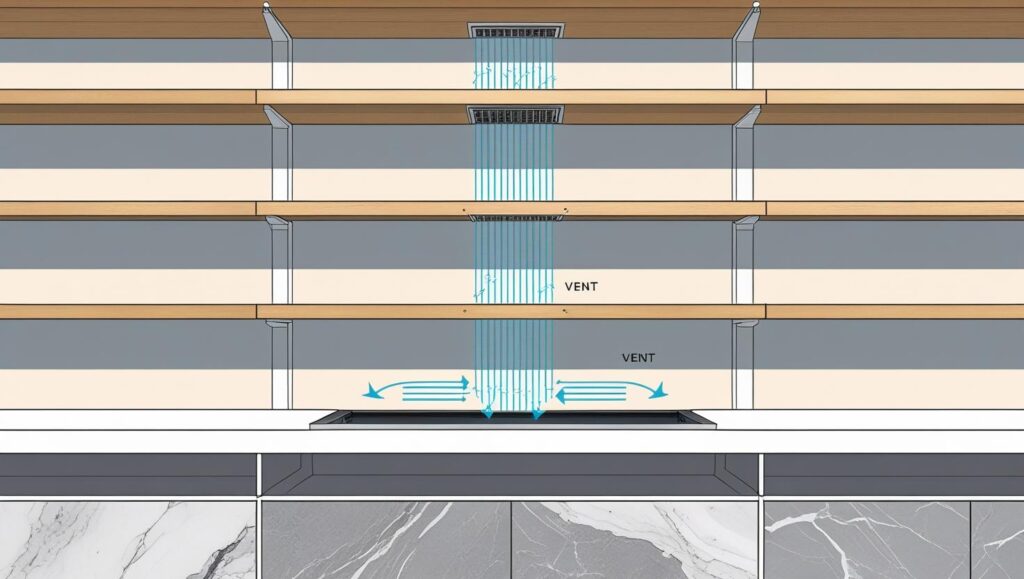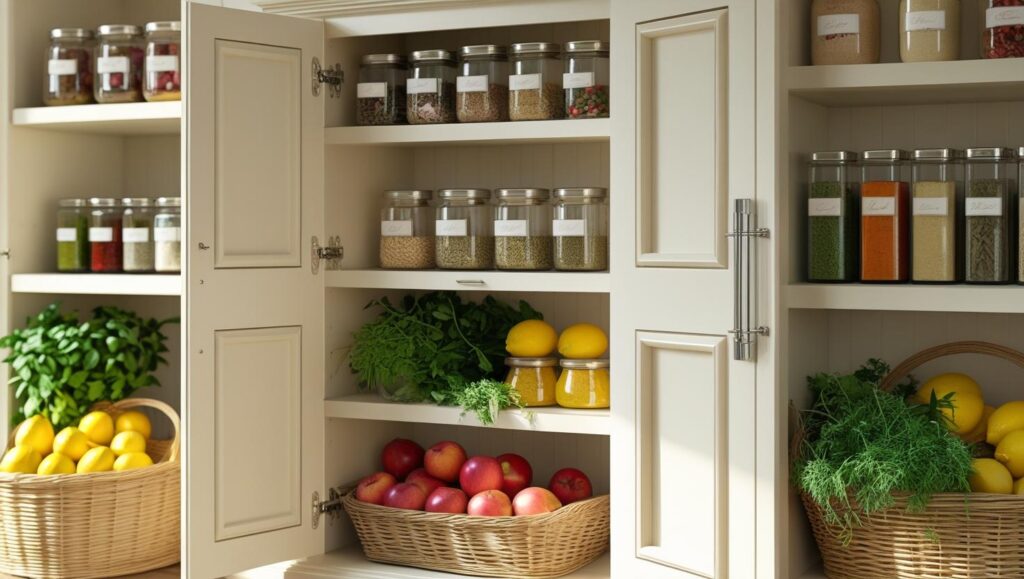
Once a staple of grand country estates, the kitchen larder is experiencing a significant revival, moving beyond simple nostalgia to become a sought-after feature in modern homes. Driven by a collective shift towards more considered consumption, bulk purchasing, and a desire for immaculate food organization, homeowners and designers are rediscovering the larder’s superior functionality as a centralized storage hub that promotes visibility and reduces food waste.
This resurgence is not merely about adding more cupboard space. It represents a fundamental rethinking of kitchen workflows and food management. Unlike a standard pantry, which is often a collection of deep, undifferentiated shelves, a true larder is designed with specific principles in mind: coolness, darkness, and ventilation.
“A larder is a purposeful space,” said Merlin Wright, design director at the renowned UK-based kitchen maker Plain English. In a recent interview, Wright explained that historically, larders were “designed to keep foods cool and dry,” often connected to a cool north-facing wall with vents to allow air to flow. This time-tested, low-tech approach remains highly effective for preserving a range of foods, from root vegetables and baked goods to spices and oils, often better than a sealed, static cupboard.
The Principles of Larder Design: More Than Just Shelves
The effectiveness of a kitchen larder hinges on core design elements that distinguish it from other forms of pantry storage. These features work in concert to create a stable environment that extends the life of foodstuffs, a crucial factor considering households account for a significant portion of global food waste. According to the United Nations Environment Programme (UNEP), an estimated 1.3 billion tonnes of food are wasted globally each year, making efficient home storage a critical tool for sustainability.
Temperature, Darkness, and Airflow
The primary function of a traditional larder is to provide a storage area that is cooler than the main kitchen but not as cold as a refrigerator.
- Coolness: A consistent, cool temperature slows the degradation of many foods. Historically, larders were built on the coolest side of a house. Modern designs often incorporate features like stone or marble shelving—known as a “cold shelf”—which naturally stays cool and is ideal for storing cheese, butter, and pastry. deVOL Kitchens, a British company celebrated for its classic kitchen designs, frequently includes slate or marble shelves in its pantry cupboards for this purpose.
- Ventilation: Proper air circulation is essential to prevent stale air and the buildup of moisture, which can lead to mold. Small, often latticed or mesh-covered vents near the top and bottom of a larder door or wall allow for natural convection, keeping the air fresh.
- Darkness: Protecting food from direct sunlight is crucial, as light can degrade nutrients and accelerate spoilage in items like oils, spices, and potatoes.

Organization and Visibility
A key advantage of a well-designed larder is the ability to see inventory at a glance. This simple feature helps prevent the purchase of duplicate items and ensures older products are used first.
“Your walk-in pantry should be a natural extension of the kitchen,” advises Tom Howley, design director of his eponymous kitchen company. He recommends that when planning the space, one should “think about its everyday practical requirements, how it will function, and what you will store there.”
To achieve this, designers emphasize shallow shelving. Unlike deep pantry shelves where items get lost at the back, larder shelves are often no deeper than 30-40 centimeters (12-16 inches). This ensures everything is visible and accessible. Tiered shelving, door-mounted spice racks, and pull-out drawers or baskets for loose items are also hallmarks of efficient larder design.
How to Design a Larder for Any Kitchen
The concept of a larder is scalable and can be adapted to fit various kitchen sizes and budgets, from a dedicated walk-in room to a single, freestanding cupboard. This flexibility is central to its growing popularity in contemporary kitchen design.
The Walk-In Larder
For those with the space, a walk-in larder offers the ultimate storage solution. This small room, ideally situated off the kitchen, can house floor-to-ceiling shelving, countertops for decanting goods, and even space for small appliances like a microwave or coffee maker, keeping the main kitchen free of clutter. A U-shaped or L-shaped shelving layout is most common, providing ample storage while maintaining clear floor space. According to design experts, a walk-in larder should be at least 1.8 meters by 1.2 meters to allow for comfortable movement.
The Larder Cupboard
For most homes, the integrated or freestanding larder cupboard is a more practical solution. These tall units, often called pantry units, are designed to maximize vertical space. They can be seamlessly built into a run of cabinetry or stand alone as a statement piece of furniture.
These cupboards incorporate the same core principles: ventilated doors, a potential cold shelf, and a mix of shallow shelving, drawers, and door racks. Bifold or “pocket” doors that slide back into the unit are a popular choice, as they allow the cupboard to remain fully open during food preparation without obstructing kitchen traffic.

The rise of the larder reflects a broader trend towards kitchens that are not only aesthetically pleasing but also highly efficient and sustainable. By providing a dedicated, intelligently designed space for food, the larder helps streamline the processes of cooking and shopping while consciously tackling the issue of food waste.
As households continue to embrace home cooking and more organized lifestyles, this centuries-old storage solution has proven its timeless value. Its principles of coolness, visibility, and ventilation offer a practical and enduring answer to the modern challenge of managing our food resources wisely.
From Kitchen to Compost: How to Use Cream of Tartar in the Garden for Healthier Plants
